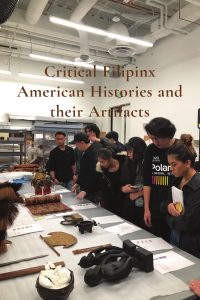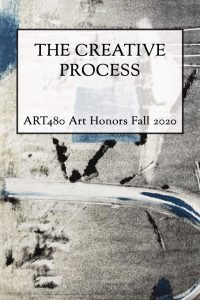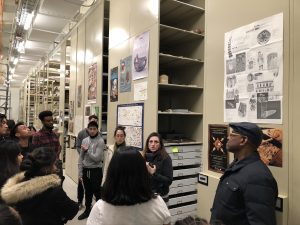5 A Recipe for Open Educational Practices
Lauren Ray
Recipe Background
In my role supporting Open Education at the University of Washington, I have seen a growth in instructor interest in incorporating open educational practices, also known as open pedagogy, into their curriculum. Open pedagogy is a form of experiential learning in which students demonstrate understanding through the act of creation, and in which their creations are openly licensed so that they may live on outside the classroom in a way that has an impact on the greater community[1].
Some examples of Open Pedagogy are:
- Students contribute to the creation of an open textbook that is then revised and built upon by students in future courses.
- Students create and/or edit Wikipedia articles to improve content coverage and quality in a subject area.
- Students design tests that are used to assess comprehension of course materials.
- Students edit and revise the syllabus for a course.
- Students create and publish a zine or e-book to discuss a theory, concept, explore research topics or provide practical guidance on a topic.
I most often see an interest from instructors who want to transform a “disposable” writing assignment into a “renewable” one in which student work will be published online and have value outside of the course. At the University of Washington, we provide access to the Pressbooks platform, and I regularly provide workshops and outreach to promote these platforms for instructors and students to use in creating open course materials.
Instructors appreciate that Pressbooks is an easy-to-use authoring platform with numerous existing examples of student-authored works. They are excited by the prospect of utilizing their classroom as an opportunity engage students with online publishing. Instructors have a sense that they’d like their students to understand something about copyright in the process, and to get help from the libraries in teaching their students a new digital publishing tool. When consulting with instructors, I try to better understand their course goals, learning objectives and we work together to redesign their assignment with an open publishing element. For my recipe, I’d like to share elements that I’ve found make an open pedagogy project successful for instructors, students and librarians like myself who are providing support.



Ingredients
For instructors:
- Be intentional about the values of open pedagogy – connection, community and transparency- as you plan your assignment and present it to students. Rather than framing the project as a way to get students to “publish online” consider the skills that students will be learning in the process.
- Value student agency by avoiding pressuring students to publish openly. This may mean re-framing how you think about the final outcomes of the open pedagogy assignment. For instance, if many students opt out of having their work published, what will this look like and how will you adjust your expectations for the work?
- Understand CC licensing, copyright and Fair Use as they apply to Open Educational Resources. Make time for scaffolding these skills so that students also understand their choices in publishing in the open. Understand how students might use openly licensed materials, utilize Fair Use arguments when using third party materials, and license their own images and media for their work.
- Understand accessibility best practices so that you can help support students in authoring online content. Be explicit with students about avoiding practices and tools that may pose barriers to accessibility.
- Ensure that students have an opportunity to think about the rights, rewards, risks and responsibilities of open pedagogy (see below).
- Consult guidance and case studies of other open pedagogy projects to help you design your assignment.
- Open Pedagogy Approaches: Faculty, Library, and Student Collaborations by
- The Open Pedagogy Student Toolkit by
- A Guide to Making Open Textbooks with Students by
-
The Open Pedagogy Project Roadmap developed by Christina Riehman-Murphy and Bryan McGeary
- Utilize librarians and other campus support staff to provide training and guidance.

For students:
For students who are engaging in open pedagogy, it’s important to understand how publishing your work in the open differs from a traditional assignment. I regularly utilize the Statement on Student Rights in Open Environments developed by my colleagues Denise Hattwig, Alyssa Berger, Nia Lam, Dani Rowland, Laura Dimmit Smyth, Myra Waddell, and Penelope Wood, at the University of Washington Bothell and Cascadia College. This framework and their presentation Open Student Work With A Safety Net: Student Knowledge Production And Student Rights In Open Environments (2020) form the basis of the following rights, responsibilities, risks and rewards that students should know before engaging in open pedagogy assignments:
Students have the right to:
- Decide if you want your name to be associated with the open project, or use a pseudonym.
- Retain all copyrights to your work.
- Decide how you would like to license your work using a Creative Commons license.
Students are responsible for:
- Citing your sources and images in your work.
- Understanding the Creative Commons license.s used in the project.
- Asking questions.
Students should consider the risks:
- How might people perceive you as an author when reading your open work? How might they perceive the people whose stories you are telling?
- Based on the license for the project and your work, how might other people use this text? Are you comfortable with those usages?
- How comfortable are you publicly identifying your name with the work?
Students should consider the rewards:
- A published work that you can cite as your own work (in future portfolio, resume, CV)
- Opportunities to learn a new platform for open publishing.
- Opportunities to learn about licensing your own work, that you can apply to other content in the future!
- Expanded engagement in a public conversation. Empower your readers w/further readings you have chosen (works cited).
Recipe Steps
When redesigning a traditional assignment into one that utilizes open pedagogy, scaffolding is critical. I find the following roadmap created by Amanda Larson for the Open Education Network’s Open Pedagogy Student Toolkit to be a useful one.
“Scaffolding Roadmap for Open Pedagogy Assignments” by Amanda C. Larson licensed under a Creative Commons Attribution 4.0 International License.
Examine the Learning Objectives and Goals for your class:
- Does the assignment artifact (essay, video, poster, etc) have value beyond supporting the learning of the student author? Can you imagine these artifacts being used by the public, scholars, organizations, community groups?
- How could the assignment contribute to an increased sense of belonging for students?
- How could an open pedagogy assignment provide an opportunity to empower students to view themselves as experts? How can you support students in this?
Scaffold learning about what working open means:
- Utilize librarians and other campus support staff to:
- Provide training on Copyright and Creative Commons Licensing
- Provide training on Accessibility Best Practices
- Provide training on tools (Pressbooks, Manifold, Wikipedia, YouTube, Hypothes.is, etc)
Redesign your Assignments:
- Give students opportunity to learn from one another by providing peer feedback (aids in decentering the instructor).
- Draw on the principles of Recognitive and Representational Justice from Lambert’s Principles of Social Justice for Open Education[2] and think about how this might impact your framing of “student scholarship.” How might you address concepts of power and authority in authorship with students? How might the assignment provide an opportunity to add missing knowledges, support authoring and publishing from students who come from marginalized experiences.
- Ensure students have agency and can choose not to engage in open practices (and that these choices aren’t tied to grade).
- Provide check-ins with students to support learning along the way.
Recipe Notes
Things to avoid in your open pedagogy assignment:
- Overloading students with too many new tools (or assuming students will learn tools quickly)
- Creating assignments that assume that students have prerequisite experience (ex: slide shows, not videos)
- Assuming that students are ok with having their work published in the open.
- Creating group assignments in which students don’t have individual agency to not be named, choose their own license, etc. (Clarify expectations for collaboration).
- Using materials with restrictive licenses (images, graphs, etc).
- Doing it alone (hint: contact your librarian).
- Subject and course guides: Introduction to Open Pedagogy: Home. (n.d.). https://libguides.uta.edu/openped ↵
- Lambert, S. R. (2018). Changing our (Dis)Course: A Distinctive Social Justice Aligned Definition of Open Education. Journal of Learning for Development, 5(3). https://doi.org/10.56059/jl4d.v5i3.29) ↵

